It’s no secret that it has become increasingly difficult (if not downright impossible) to support yourself as an artist given our current economic structures. From multiple part-time jobs to separate, full-on careers, most people who create must do so at their own cost, investing personal time, money, and labor for little to no return even if the work becomes widely-recognized. Yes, the art world (and art market) has some deep structural issues, but what can we do about it? Curensea founders Natalia and Sofia sit down with AZ to tell us about the platform that they have designed to address these problems, delving deep into the decisions behind their ingenious solution. If the future of creative work is to thrive, it is high time for us all to reconsider the creative economy as Nat and Sofi have and throw our collective weight towards changing the system. After all, we are living in a time where social media rules supreme, and the simple decision of which platforms to endorse can be in itself a fight for the restructuring of our creative economy. Curensea is an exciting frontrunner in tackling the gap between “appreciation” and “support” for creative work, and we hope to see even more alternatives in the near future to bring about together a long-overdue revolution of “the arts.”
AZ: You met at the Beijing Film Academy, what were you guys doing there?
Nat: I was studying cinematography as a visiting scholar. I am a huge fan of documentaries, and I had a dream of making some of my own someday (maybe I still will!). At BFA I focused my time on learning as much as I could about cameras and improving my Chinese language abilities. I was also a screenwriter working on ideas for U.S.-China co-productions. (This is a photo of my class)
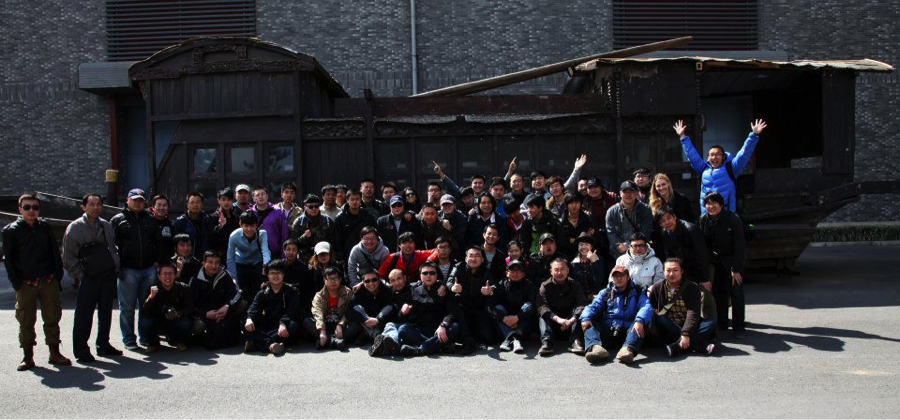
Sofi: I was studying Chinese and specializing in film related vocabulary because I wanted to work in the film industry in Beijing. I started interning at a VFX firm (Pixomondo) in Beijing towards the end of the second semester at BFA.
AZ: What was it like studying at the Beijing Film Academy?
Nat: I learned so much at Beijing Film Academy it is hard to even describe it. My course was all day, every day, so it was full immersion in filmmaking and Chinese language. It was pretty difficult at first because I didn’t know the film vocabulary, but one of my classmates helped me find a dictionary of film-related words, so I studied that, and then it got a lot easier to understand what was going on. My classmates were awesome. We had students from all parts of China and foreign students from North Korea and Brazil. I learned so much about the world and myself and the power of filmmaking by being a part of this program. The style of teaching was a bit different than it is in the U.S., with the classes mainly being straight lecture, so my classmates were a huge help explaining things I didn’t fully understand. Some of my classmates would also help me out by taking me out to explore on the weekends where we could practice our photography among the beautiful scenery of Beijing. I am eternally grateful that I had the opportunity to study there. And it is also where I met and became friends with Sofi!
Sofi: It was a really fun and interesting time – the international students were from all over and had very varied backgrounds, and it was fascinating to learn about everyone’s different stories.
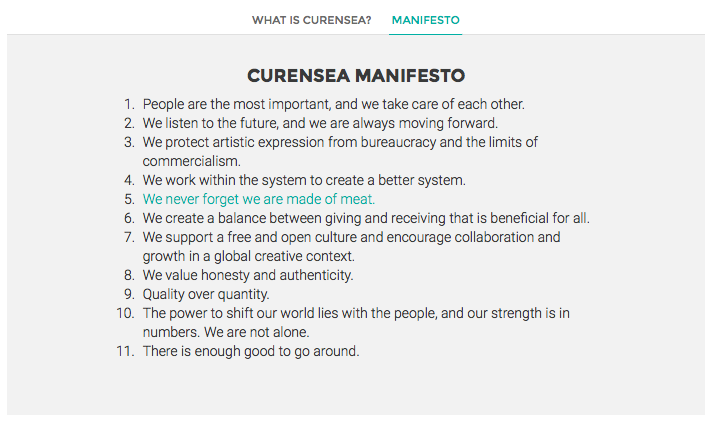
Which personal experiences drew the two of you to conceive of Curensea?
Nat: After I had left China, I focused my energy on getting my writing career off the ground. I had several promising projects in the pipeline in China, but I quickly realized the reality of the screenwriter’s life: it is incredibly difficult to actually get a project made, and very difficult to earn money. I also hated not having much to show for all the writing I had done because screenplays are not generally read by the public for fun, so I decided to try self-publishing some short stories and a novella on Amazon. Going through that process taught me a lot about the current situation for writers and how difficult it is to break through the noise as a new unknown writer. I saw that when my books were on the free promotion, I would get a bunch of downloads, but as soon as the price went up to 99 cents, the downloads stopped. Someone who had downloaded my book for free told me that they enjoyed it and wished they had given me the 99 cents for it, which sparked an idea that it would be better to let people read the work for free and decide after to pay for it. This is how we came up with the idea for Curensea: a system where everyone can enjoy creative work for free, and when they like it, they can compensate the creator for it very easily.
Sofi: Working at the VFX firm I got to know a lot of digital artists who created amazing personal work and were distributing it online – sometimes reaching very large audiences, but with no option to monetize except for selling a physical object (e.g., phone case, pillow, etc.) with the art or a print. It seemed crazy that people can build a following of 10 or 20K people who enjoy their art in its digital form and get nothing in return. I was also interested in writing and distributing my own creative work, and realized that most of the options out there are not really fair to creators, and provide limited opportunities to monetize.
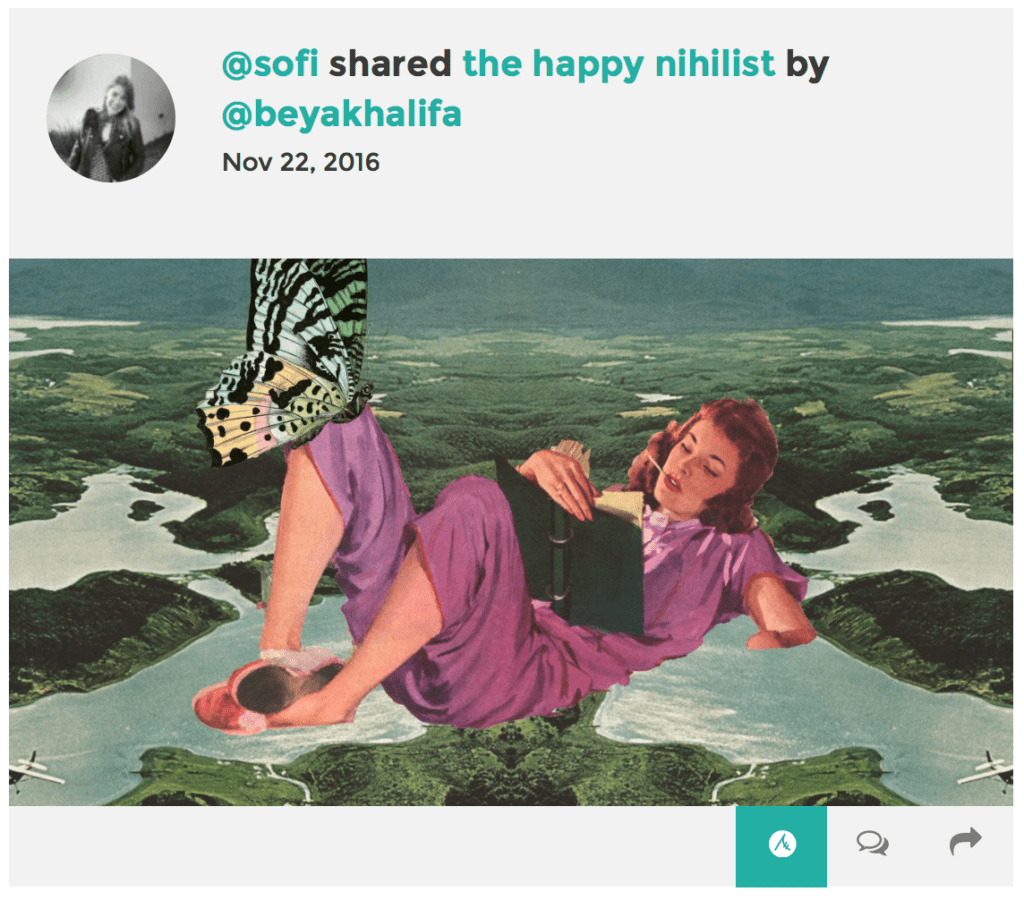
AZ: What was it like to dive headfirst into the world of start-ups as non-tech people?
Both: We weren’t completely non-tech people, and members of our families are in the tech, business, and startup worlds, so we did have a little bit of understanding as to what we were getting ourselves into. Sofi had also already worked at a startup, and I had worked for an online open educational resource library, but actually making a startup on our own was something neither of us had ever done before, and we learned a ton along the way. One thing I noticed is that startups are not that different from filmmaking. Film is pretty high tech, has a lot of moving parts, and completing a production takes teamwork. For a startup, founders are writer/directors and the idea and product plan is like the script. The developers and designers are the set builders and cinematographers, investors are executive producers, and the target market is both the audience and the stars of the show. To succeed with a startup, you need to be able to think creatively, collaborate, improvise, connect with people, and understand the human condition: filmmaking teaches you all of these skills.
AZ: Why do you think Curensea works better as a platform rather than as a plug-in?
Sofi: The issue with plug-ins is that they are simply an element that is inserted into an existing site; it doesn’t allow for influence of the tone or culture of the platform. Curensea is specifically designed to create a sense of value; it’s an environment where it makes sense for people to tip, and not just as an afterthought. Also, we ask people to confirm that they own the rights to the piece they upload; most sites don’t have a culture of attribution, which is an issue, and even more so when there is payment involved.
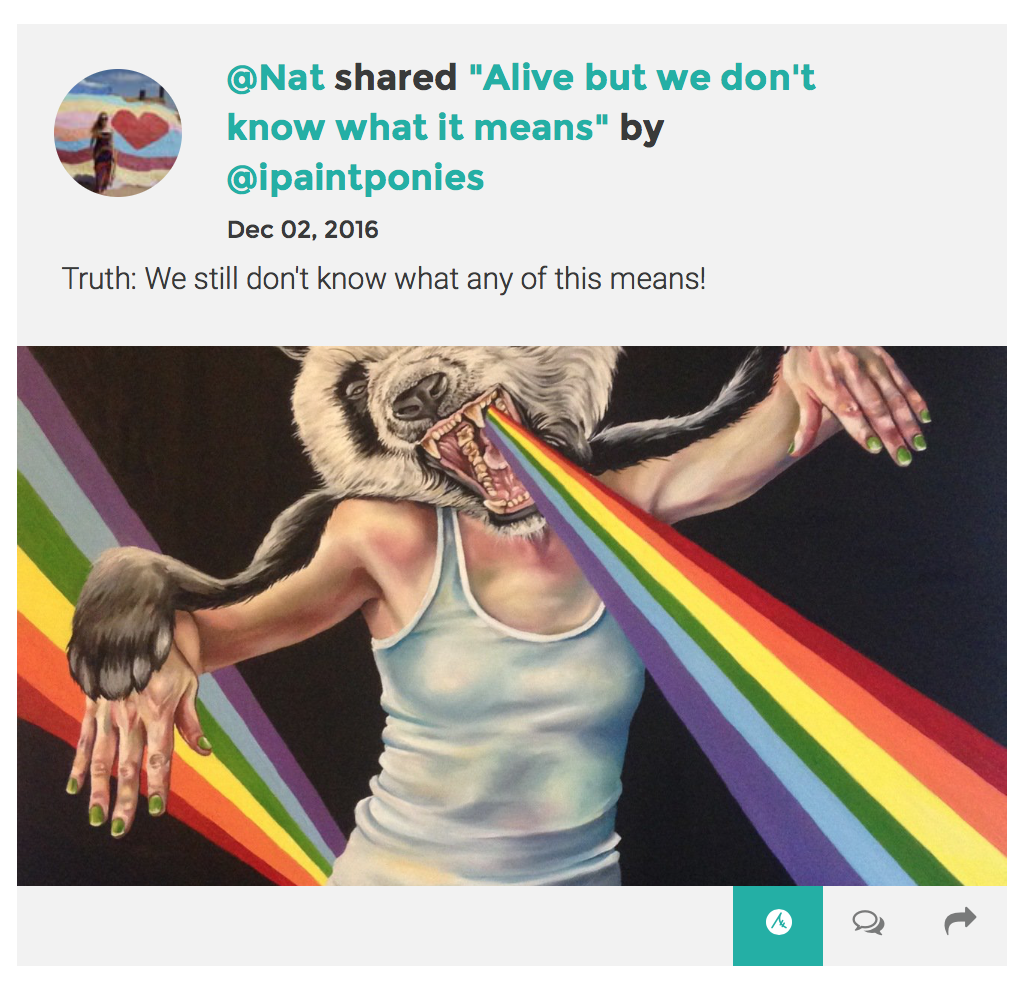
AZ: How do you imagine competing with Instagram, Vimeo, or SoundCloud?
Nat: Instagram, Vimeo, and Soundcloud are awesome companies doing great things. At this moment, we are focused on building the base of Curensea so that we can someday be mentioned among their ranks. Our focus is on creating a new environment that functions as both a marketplace and social network so people can connect with creative work they love in a new way, and creators and curators will earn for their contributions.
AZ: You mentioned that the metrics of each user would be kept private, why?
Nat: The number of likes or followers a person has on social media has a huge influence on how that person and their creative work is perceived by others. While this sometimes can be a good thing by helping people to find work that resonates with large numbers of people, it can also distract and change the way people view creators who are new to social media or new to creating. On Curensea, we want to create an environment where everyone has a fair chance to gain exposure and get their work out to the right audience. Creative works that are shared widely by fans and curators will be seen by more people on Curensea, but the first time someone sees that work, they will not be influenced based on the number of likes it has. We believe that this gives people more freedom to come to their own conclusions about what they feel about a creative piece, and also frees creators from the social media anxiety of maintaining good numbers, so instead they can focus on their art.

AZ: It seems that Curensea has a certain philosophical alignment with micro-financing platforms like Kiva or GoFundMe, did you guys research those models and if so, what were your conclusions?
Sofi: We’ve looked at crowdfunding sites, and we think they provide some awesome opportunities, but the model is very different. Crowdfunding sites are about getting people to fund a project before it’s been fully developed; they are not designed for distribution. Curensea is the platform where you would put a creative project when it is completed – it’s a place to distribute the work. The coin/microtipping aspect also means that people can participate for much lower amounts than what they would give on a crowdfunding site, and we don’t have a perk system because we think the finished piece is sufficient in itself to deserve tipping.
AZ: Can you talk a little about the curatorial aspects of Curensea?
Nat: One of the most important aspects of success once you publish a creative work online is having people share it on their own social media networks so that you can reach your audience through the recommendations of fans. I learned this first-hand when I was trying to promote my own self-published writing. One tweet from the right person to the right group of people could increase sales and visibility tremendously, and there are certain people who are really good at doing that. On Curensea we want to emphasize the importance of those gifted and generous curators, which is why they get 10% of the revenue when people tip what they share. The artist will always get 100% of direct tips on their work, and 90% when they are tipped through a curator’s share. Curators do a great service by framing creative work in ways that offer fresh perspective and can often change the way you see a piece, making you enjoy it even more. Anyone on Curensea can curate, so if you want to create a page dedicated to paintings of your favorite animal or black and white photography, you can do that and share all the pieces on Curensea that fit with your theme. The way you curate is completely up to you, and you can be happy knowing that you are supporting the creators you love by sharing their work.
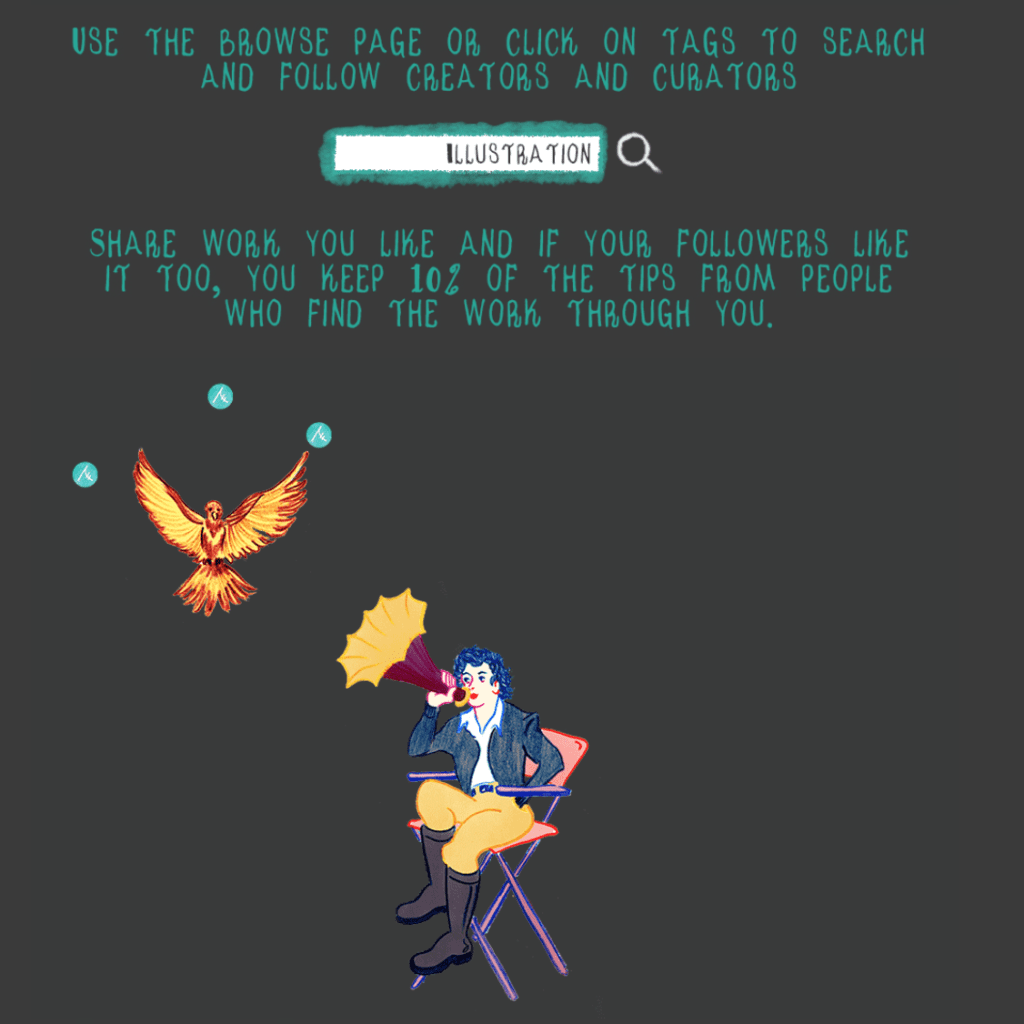
AZ: How has the world responded to Curensea? Any surprising statistics or numbers? Is it more popular among visual artists, writers, or musicians etc.?
Sofi: The coolest side effect has been the discovery of creative work from unexpected sources, like friends or family who were inspired to post by what they saw on the site. It’s been awesome to see people connecting over their creativity, whether they are professional artists or just starting out. It’s also been interesting to see the reactions of artists overseas – Curensea’s user base is already very international, and there has been a lot of enthusiasm abroad.
We currently have a lot more visual artists on the site, but we don’t see this as a sign that other groups aren’t interested – we have specifically been targeting visual artists, and the system is working well for the writers and musicians that we already have on the site.
AZ: Is there a phone app coming?
Nat: Yes. We definitely will make a phone app. Our goal for an app is Spring 2017.



